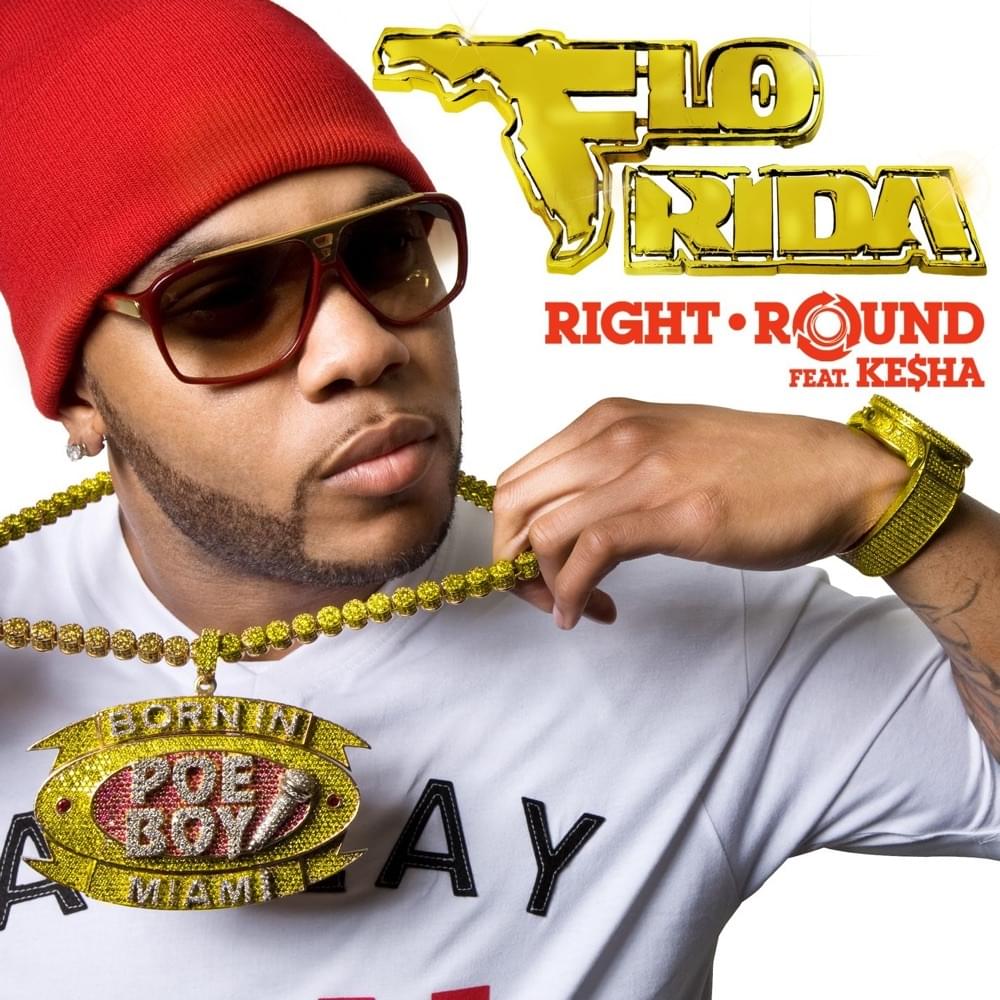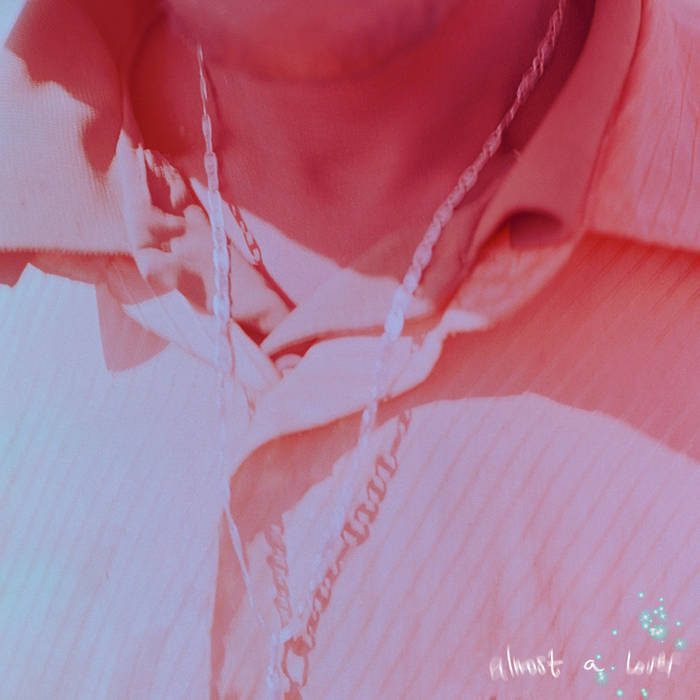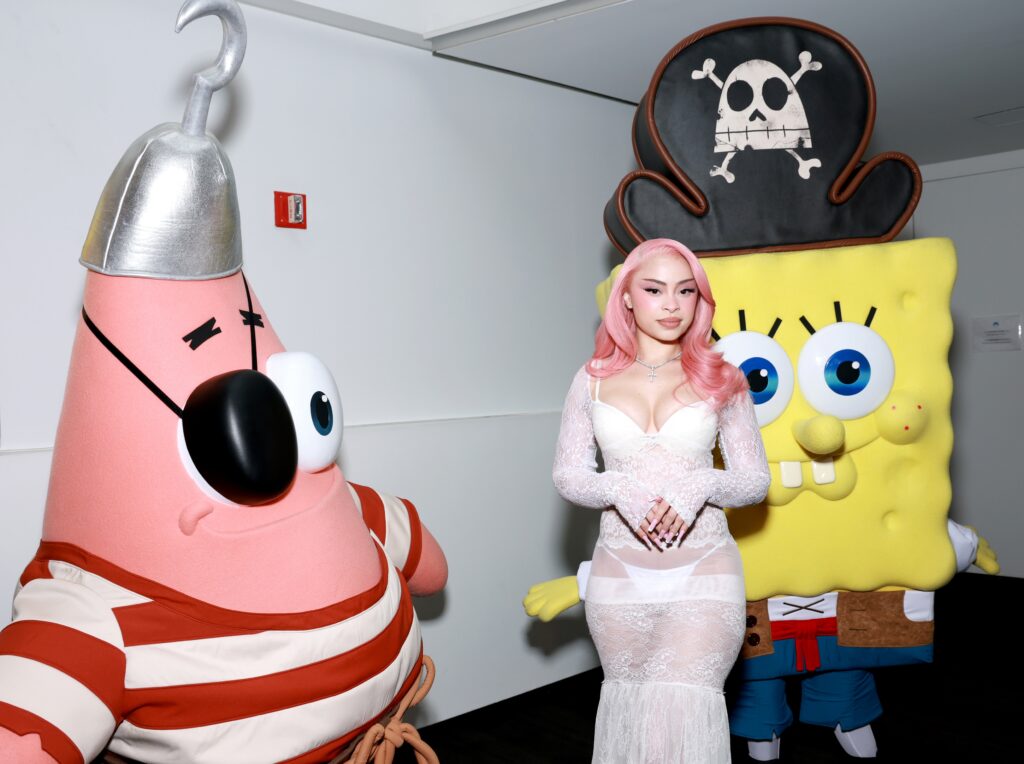
In The Number Ones, I’m reviewing every single #1 single in the history of the Billboard Hot 100, starting with the chart’s beginning, in 1958, and working my way up into the present.
Pete Burns wanted to make his version of a Luther Vandross record. This did not exactly fall within his skillset. Burns came from the British punk world. He got his start as the singer for the Mystery Girls, a band that also included his friend Julian Cope. They played exactly one show, opening a 1977 Sham 69 gig in Liverpool. When that fell apart, Burns led Nightmares In Wax, whose first show was opening for Wire in 1979. After a few record and member changes, Nightmares In Wax become Dead Or Alive — the group that became famous for Burns’ glammy, androgynous style and for the song that he sang when he was going for a Luther Vandross thing.
The direct inspiration was “I Wanted Your Love,” a soulful dance-funk jam that Luther Vandross released in 1984. Pete Burns heard “I Wanted Your Love” when it was still new, and he came up with his own take on that sound. Dead Or Alive recorded the song with Stock Aitken Waterman, the British production team who would later make huge hits with people like Rick Astley, Bananarama, and Kylie Minogue. At the time, Stock Aitken Waterman were mostly known for culty hi-NRG club-pop jams, and they hadn’t experienced any real pop success. But all the different things that went into Dead Or Alive’s “You Spin Me Round (Like A Record)” — the bubbly dance-funk inspiration, the ecstatically cheap SAW synth-stabs and handclaps, Pete Burns’ outrageous and unapologetic diva presence — turned the song into one of 1985’s defining anthems.
With its proudly swishy video and its monster hook, Dead Or Alive’s “You Spin Me Round (Like A Record)” made a big splash on both sides of the Atlantic. The song went #1 in the UK. In the US, it was a crucial part of that early MTV wave, and it just missed the top 10. (That track’s #11 peak is the only thing stopping me from giving it a 10.) “You Spin Me Round” lingered in the popular imagination, getting burn on flashback-brunch radio shows and at ’80s dance parties. Then, nearly a quarter-century later, it became the basis of a cynical and witless but undeniably huge club-pop smash. Don’t blame Dead Or Alive for that. They didn’t have anything to do with it.
It has come to my attention that some people still feel a certain type of way about sampling — an issue that’s not really going away, as a great many current hits are built on nostalgia for older songs. Sampling has basically never been a problem for me. If you grew up with rap, then sampling is part of the fun. People hear bits and pieces that they can use from older songs, and they build new things out of them — cultural flotsam as raw material, shared memory as a playground. It’s beautiful. But I don’t hear any of that playful creativity at work on Flo Rida’s “Right Round.” Instead, I hear Flo Rida and his many collaborators taking an obvious smash and making it dumber and more obvious.
“Right Round” was never supposed to be an artistic statement. Instead, it’s the work of cold, calculating music-business operators who had an idea that they knew how to exploit. On some level, I can respect the locked-in mercenary instinct that goes into making a piece of ephemerally effective bubblegum. “Right Round” is a party song, and it’s not really supposed to do anything other than facilitate dancing and singing along. Its commercial success is proof of concept; the song did what it was intended to do. In this case, though, I find the end product to be almost punishingly vacuous — a song about having fun that isn’t really any fun at all.
The people involved in “Right Round” were all doing their jobs. They recognized where pop music was going. There was a demand in the market, and they supplied that demand. A year before “Right Round,” the previously unknown Dade County rapper Flo Rida scored an out-of-nowhere monster hit with his club-rap jam “Low.” Flo Rida was barely a factor on his own song. T-Pain’s unforgettable earworm of a hook was the real star, and the fizzy uptempo beat, which was halfway to house music, probably deserved second billing. Flo Rida was simply a placeholder, a steady presence that filled up the spaces between choruses.
“Low” was a smash, but it wasn’t going to turn Flo Rida into a star. Stars are larger-than-life figures with brash, vivid personalities. That was not Flo Rida. But Flo Rida had the skill and the instinct necessary to serve a song like “Low.” His fast, bouncy, melodic flow stayed out of the way and kept everything moving. When he recorded “Low,” Flo Rida was trying to make it as a conventional rapper, working with Miami-area peers like Rick Ross. But Flo Rida’s actual rap songs never connected, and he recognized that. Flo Rida’s debut album Mail On Sunday yielded one more minor hit in the will.i.am collab “In The Ayer,” but the actual album sold virtually nothing. Nobody wanted a full-length statement from Flo Rida, so he went right back into the lab and made more songs like “Low.”
R.O.O.T.S., Flo Rida’s second album, came out almost exactly one year after his first. I’m sorry to put something this stupid into your brain, but the record’s title supposedly stands for Route Of Overcoming The Struggle. On R.O.O.T.S., Flo Rida essentially stopped presenting himself as a Southern rapper. Instead, he chased the glossy crossover-pop success of “Low.” The album’s credits are full of big-deal pop professionals: Ne-Yo, Nelly Furtado, Akon, will.i.am, Wyclef, Stargate, Jim Jonsin. And then there’s first single “Right Round,” which has its own crazy-ass list of credits.
One of the writers responsible for “Right Round” is Bruno Mars, a figure who will appear in this column many times. We’ll get into Bruno Mars’ whole backstory in a future column, but nobody knew who he was in 2009. Bruno had come to Los Angeles a few years earlier, and he struggled to find a record deal, making ends meet partly by playing in a cover band called Sex Panther. After a while, Mars got together with fellow musicians Philip Lawrence and Ari Levine to form a songwriting and production team called the Smeezingtons — the worst name I’ve seen since I found out what R.O.O.T.S. stands for.
In 2013, Philip Lawrence told American Songwriter that the idea for “Right Round” arrived when he, Bruno Mars, and the Atlantic Records A&R guy Aaron Bay-Schuck were sitting in a car, listening to beats and “throwing out ’80s ideas.” He doesn’t say who had the idea to turn Dead Or Alive’s “You Spin Me Round (Like A Record)” into a chorus about blowjobs. Maybe nobody wanted to accept the credit, or maybe the hook just wrote itself. If they hadn’t come up with the chorus that night, someone else would’ve thought of it. It’s too obvious to sit unused: “You spin my head right round, right round, when you go down, when you go down down.”
Everything about “Right Round” is just as thuddingly on-the-nose as that chorus, but the song apparently required the efforts of many, many well-paid music-industry types. The list of credited songwriters on “Right Round” is long. There’s Flo Rida. There’s Dead Or Alive, who hopefully got a giant pile of cash. There’s Bruno Mars, Philip Lawrence, and Aaron Bay-Schuck. There’s DJ Frank E, the Denver-based pop-rap producer who was not involved in producing “Right Round” but who somehow scored a songwriting credit anyway. (DJ Frank E did a lot of work with Flo Rida, and his work will appear in this column again.) And then there are the two credited producers on “Right Round”: Massachusetts-born beatmaker Kool Kojak and Dr. Luke, a man who was in the midst of a wildly successful run.
Dr. Luke started off in the rap world, and he allegedly got his name from Mos Def, but the songs that made him famous were the glittering centrist pop baubles that he made with mentor Max Martin. While he was breaking through, Luke tried to apply his bright, hard-candy pop skills to a few rap records. In 2006, Luke produced “Love Me Or Hate Me,” the British grime MC Lady Sovereign’s mostly unsuccessful bid to crack the American market. (“Love Me Or Hate Me” peaked at #45, and it’s Lady Sov’s only Hot 100 hit.) A year later, Luke worked with teenage Brooklyn rapper Lil Mama on “G-Slide (Tour Bus),” the follow-up to her breakout hit “Lip Gloss.” (“Lip Gloss” peaked at #10. It’s a 9. “G-Slide (Tour Bus)” missed the Hot 100 entirely.)
When Dr. Luke worked with rappers, he didn’t really make rap songs. Instead, he crafted sleek, gleaming electronic pop tracks that crowded rappers’ voices over to the corners of the mix. The songs had none of the cinematic grime of proper rap music, and they didn’t leave room for storytelling or myth-creation. Instead, the rappers simply became vehicles for hooks. When rap music actually ruled the charts, those records were bound to fail. But when electro-pop took over the Hot 100, a savvy but personality-free rapper like Flo Rida could make a whole lot of money with a Dr. Luke beat.
Dr. Luke wasn’t the only person who had a hand in crafting the “Right Round” instrumental, but you can hear his style all over the track, from the intro on down. That intro is pure club-pop: a few blinky bloops, a rising drone like the Dolby Stereo movie-theater bumper, a sudden orchestra-hit stab, and then Flo Rida singing that degraded Dead Or Alive hook over candy-floss rave synths. The actual “Right Round” beat is a little bit awkward — a lumbering electro-shuffle without a hint of syncopation. Over that beat, Flo Rida singsongs his boilerplate strip-club gibberish like an AI version of Nelly.
If you don’t listen to what he’s saying, Flo Rida’s “Right Round” flow is pretty impressive. Flo Rida skips over all those expensive-sounding keyboard bleeps, landing on a melodic patter that lets syllables fall like rain. He’s strictly in lockstep with the track, not a line out of place. But Flo Rida says nothing on that beat. His lyrics don’t even make sense: “Lil mama, I owe you just like the flowers/ Girl, you the truth, with all of that goody power.” It’s the Max Martin melodic-math approach, with lyrics fully deemphasized, applied to rap, where lyrics are always the focus. Flo Rida took the most passionately, fearsomely, dangerously warts-and-all human music on the planet, and he turned it into something featureless and robotic. I hate it.
I blame Dr. Luke for all of this. In a 2010 New York magazine feature, Luke says that he and Flo Rida were listening to two different versions of the same track in the studio. I guess the idea is that two different producers were working on “Right Round,” trying to come up with the right version for that solid-gold idea. Flo Rida was leaning toward the other version, but Luke says that he told him, “Dude, I am not telling you this because I’m going to get paid. I’m telling this for you. Mine is a better version of the song.” Flo Rida didn’t agree, but when some women arrived at the studio, Luke said, “Why don’t we ask the girls what they think?” The girls chose Luke’s track, and the rest was history.
Dr. Luke also got a girl to sing on “Right Round.” We’ll get into Kesha Rose Sebert’s story in a later column. (I usually tell featured guests’ whole backstories here, but Kesha sings something like 10 words on “Right Round,” and her whole ascent should be more than just a tangent in a Flo Rida column.) Kesha signed a deal with Dr. Luke’s Kemosabe label four years before she appeared on “Right Round.” For a long time, Kesha was living in LA and stuck in limbo — writing for other artists, singing backup on other artists’ records, popping up in Katy Perry’s “I Kissed A Girl” video. When Dr. Luke and Flo Rida decided that “Right Round” needed a woman on the hook, Luke called Kesha into the studio, and she traded off lines with Flo Rida. Kesha’s raspy, horny voice sounds cool on the song, and her interplay with Flo Rida turns it into more of a reciprocal oral-sex thing, but her whole personality doesn’t exactly shine through.
On the American version of “Right Round,” Kesha didn’t get a feature credit; the song appears in its Billboard listings as a Flo Rida solo track. Overseas, Kesha did get credit, though she told Billboard that the song didn’t earn her much of a paycheck: “I didn’t make any money off the Flo Rida song — no one knew it was me. Whatever. I’m money; I don’t need money.” Kesha also claimed that Flo Rida wanted her to be in the video but that she turned down the opportunity, since she preferred to make a name for herself. Soon enough, she did exactly that.
Maybe Kesha didn’t want to appear in the “Right Round” video because she knew the “Right Round” video would be dogshit. Director Malcolm Jones’ clip is almost bafflingly cheap and shitty. It’s mostly just Flo Rida and the model who lip-syncs Kesha’s parts in front of a screen that’s flashing various glamorous locations: London, Paris, Miami. Flo Rida doesn’t actually go to these places; he just raps next to postcard-ass representations of them. It reminds me of Paleolithic disco-era music videos — those ones where it’s just Michael Jackson dancing in front of a green screen or whatever. Maybe label bosses figured that nobody cared about Flo Rida’s persona and that they didn’t need to invest any money in advertising that persona. Flo Rida could just take his shirt off and pose blankly at the camera, and that would be enough.
Maybe I’m the wrong person to judge “Right Round.” It’s a party song, and it came out at the exact moment when I was no longer partying. The song reached #1 two months before my daughter was born. I’d gotten a new job in Chicago, and my wife and I moved cross-country, to a city where we didn’t know too many people. When you’re out with your friends at night, drinking and screaming along with whatever’s playing, a stupid song can suddenly become a life-affirming anthem. I never had that experience with “Right Round.” All I ever heard was a stupid song — or, even worse, a stupid echo of a great song.
“Right Round” is a sex song that’s not even a tiny bit sexy. It’s catchy in the wrong way — an earworm that could slowly drive you insane before you get the hook out of your head. It’s a vision of rap music that seems aimed directly at European audiences who don’t like rap music. “Right Round” ended up being huge in both Europe and the US, though. In its first week, the song sold over 600,000 downloads, shattering the single-week record that Eminem had set a week earlier. “Right Round” has a cultural footprint, and the song is memorable enough that it’s never fully faded away. It’s an effective piece of work that accomplished its commercial goals, but I don’t like or respect it one bit.
Flo Rida worked with Dr. Luke and Kesha again on “Touch Me,” another extremely annoying track from the R.O.O.T.S. album. “Touch Me” came out as a promo single, but it never charted. Lots of the songs on R.O.O.T.S. came out as singles, and most of them didn’t get very far. The album did have one other sizable hit: “Sugar,” which sampled Eiffel 65’s 1998 cheeseball Euro-dance banger “Blue (Da Ba Dee)” many years before that recent David Guetta/Bebe Rexha track and which went all the way to #5. (“Sugar” is a 3. “Blue (Da Ba Dee)” peaked at #6; it’s an 8. Guetta and Rexha’s “I’m Good (Blue)” peaked at #4 earlier this year. It’s a 7. You will not shame me. I cannot be shamed.)
Flo Rida’s whole career is so baffling. He’s got all these major hits, but I don’t know if he has fans. He has a sound, but he doesn’t have any detectable personality. He’s a rapper whose raps are usually the least important parts of his songs. Nobody cared about Flo Rida’s R.O.O.T.S. album; it didn’t even go gold. Nobody cared about Flo Rida’s next album, either. The presumptuously titled Only One Flo (Part 1) came out in 2010. (He worked fast.) That album only had one real hit: “Club Can’t Handle Me,” which found Flo Rida teaming up with the aforementioned David Guetta. That song also showed up on the soundtrack of Step Up 3D, a movie that I really like. “Club Can’t Handle Me” went even for even bigger and cheesier trance melodies than Flo Rida’s previous hits, and it peaked at #9. (It’s a 6.)
Only One Flo (Part 1) came and went without another big hit, but Flo Rida’s strangely persistent run of giant singles wasn’t over yet. We’ll see him in this column again.
GRADE: 2/10



